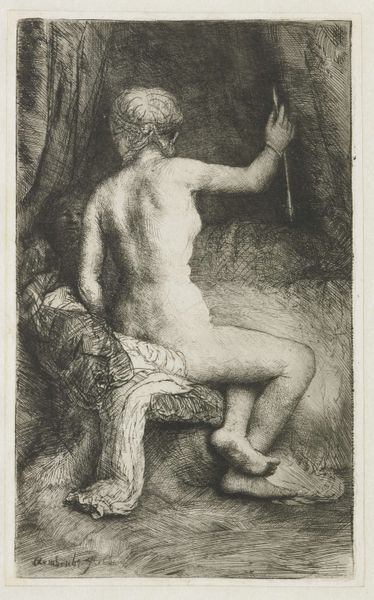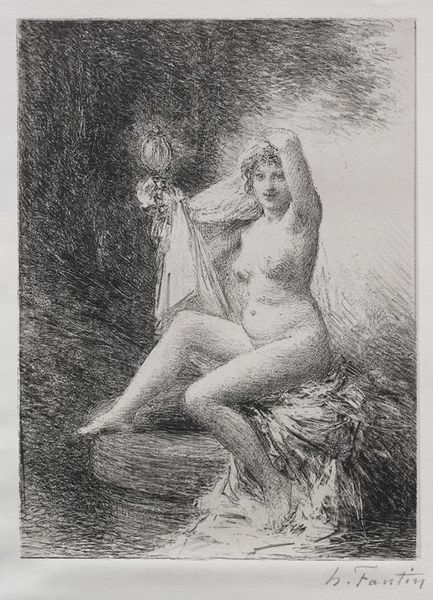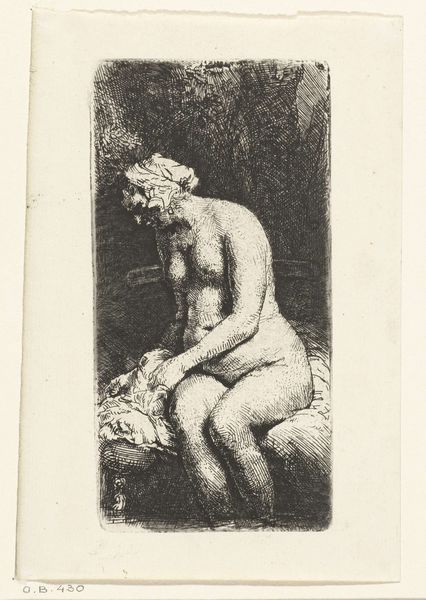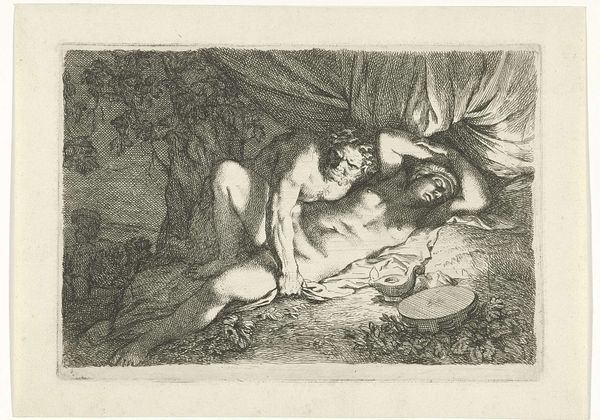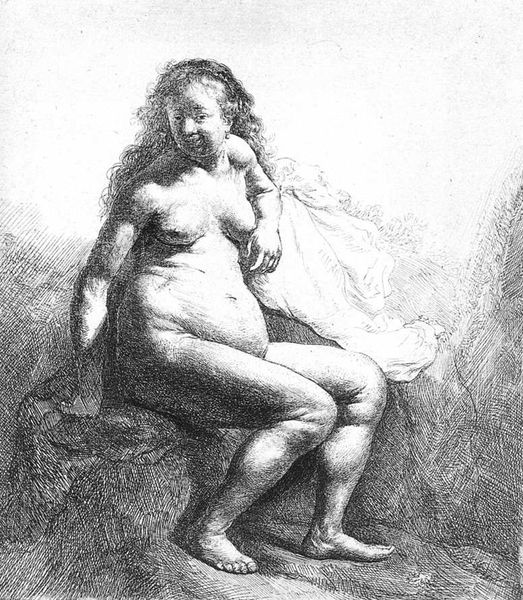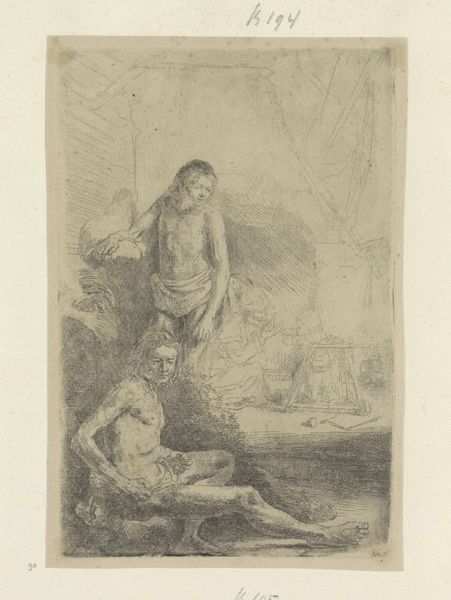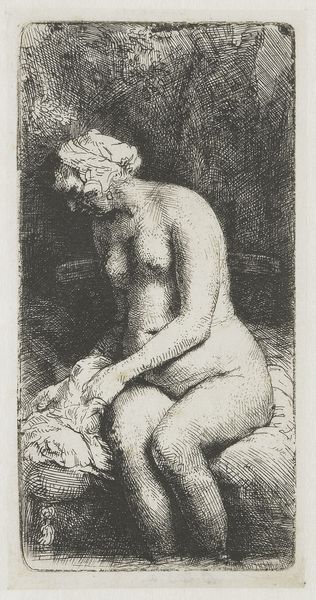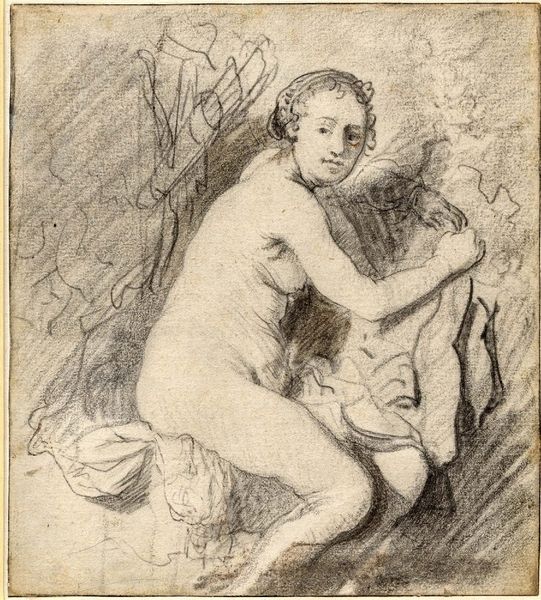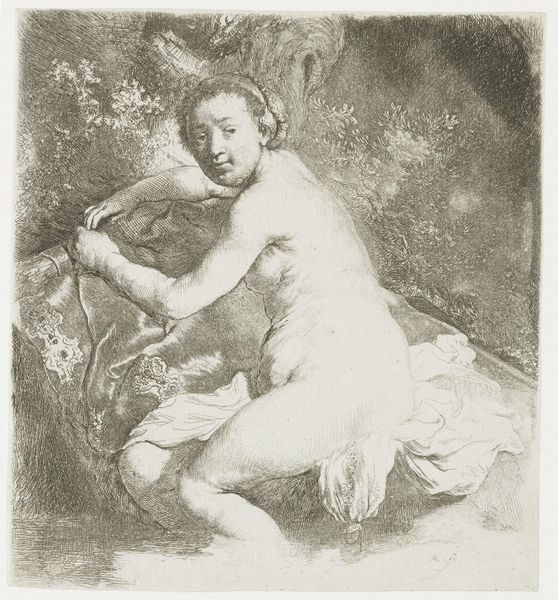
drawing, paper, ink
#
portrait
#
pencil drawn
#
drawing
#
baroque
#
dutch-golden-age
#
pencil sketch
#
charcoal drawing
#
paper
#
ink
#
pencil drawing
#
portrait drawing
#
genre-painting
#
nude
Dimensions: height 173 mm, width 160 mm
Copyright: Rijks Museum: Open Domain
Editor: So, this is Rembrandt van Rijn’s “Naked woman on a mound” from around 1631. It’s a drawing, ink on paper, and immediately strikes me as... surprisingly vulnerable. Not the idealized nudes we often see. What jumps out at you? Curator: Vulnerable, yes! It feels almost like peeking into a private moment. Forget goddesses; this is real, raw humanity etched onto paper. It makes me wonder, who *was* she? What was Rembrandt thinking? And why present her so unvarnished? Don't you find it refreshing, in a way? Almost rebellious, considering the artistic climate of the time? Editor: Definitely rebellious! It’s also quite a contrast to some of his more dramatic history paintings. I guess I’m wondering if it’s meant to be more of a study, or a commentary on beauty? Curator: Perhaps both! Remember, Rembrandt was fascinated by the human form, and he wasn’t afraid to depict aging, imperfection, life's little stories written on the body itself. Think of this not as *the* perfect nude, but *a* nude, a specific person rendered with honesty and a clear, loving eye. A fleeting moment captured in ink. A statement. Don't you think it's wonderful how few strokes he needs to say so much? Editor: It is. It really makes you think about representation and beauty in a totally different way. I hadn't considered it that deeply before. Curator: Precisely! Art invites questions, not just answers, and sometimes, it whispers truths we need to hear. What do *you* hear, now? Editor: That beauty can be found anywhere, if you choose to look for it, I suppose. And, I now have a better appreciation for Rembrandt, the rebel! Curator: Exactly. Always question what you’re seeing and feeling, and remember there’s beauty everywhere, in the expected and especially the unexpected.
Comments
No comments
Be the first to comment and join the conversation on the ultimate creative platform.


